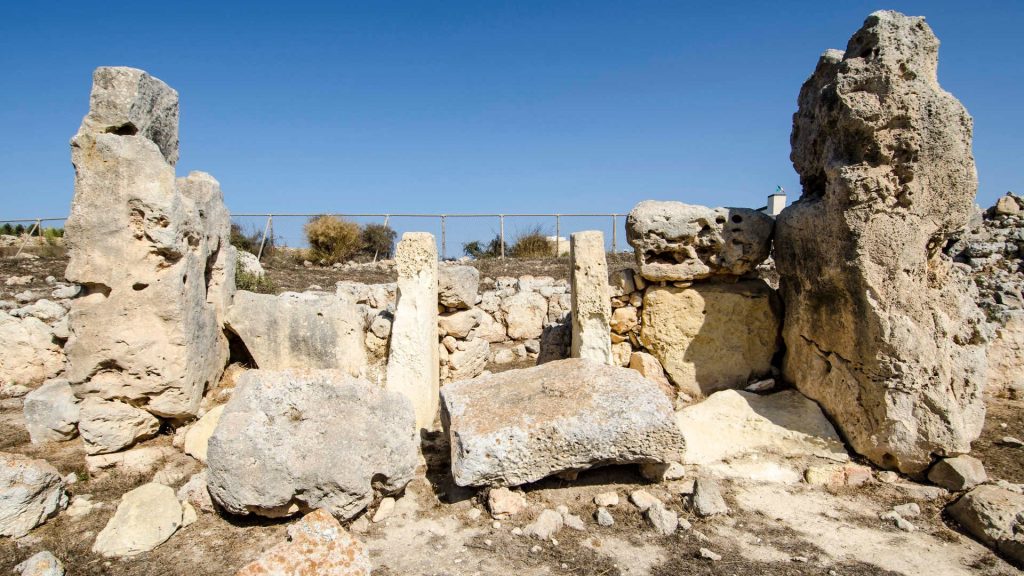Skorba Temples

Situated in the hamlet of Żebbiegħ, at the outskirts of Mġarr, Malta, Skorba has been designated as a UNESCO World Heritage Site due to its archaeological value and to its contribution in the understanding of Maltese history. It is also one of the oldest free-standing monuments of such scale and complexity in the world.
Excavated by renowned archaeologist David Trump in the early 1960s, quite late when compared to other similar sites, Skorba is the only megalithic temple site in Malta to have been excavated in living memory using a scientific method.
The temple is unique for providing crucial evidence concerning the domestic aspect of the prehistoric people, including the temple builders themselves. The site contains the remains of two megalithic temple structures; one of which dates from the earliest phase of megalithic construction – the Ġgantija Phase, while the other was built at a later stage in prehistory, that is, the Tarxien Phase.
The remains of several domestic huts, in which the prehistoric temple builders used to dwell, were also discovered at this site. Some structures date from before the Temple Period (i.e. before 3600 BC), and therefore, are amongst the oldest constructed structures on the Maltese Islands. Scientific studies on these structures have provided crucial evidence about the life-sustaining resources that were available at the time and have also thrown light on the dietary patterns of the prehistoric people.
The difference in the material used to build the temple, partly of local Upper Coralline limestone, and partly of local Globigerina Limestone, allows the visitor to distinguish between different phases of construction. Moreover, the rural location puts the visitor into the same landscape setting that surrounded the prehistoric temple builders.